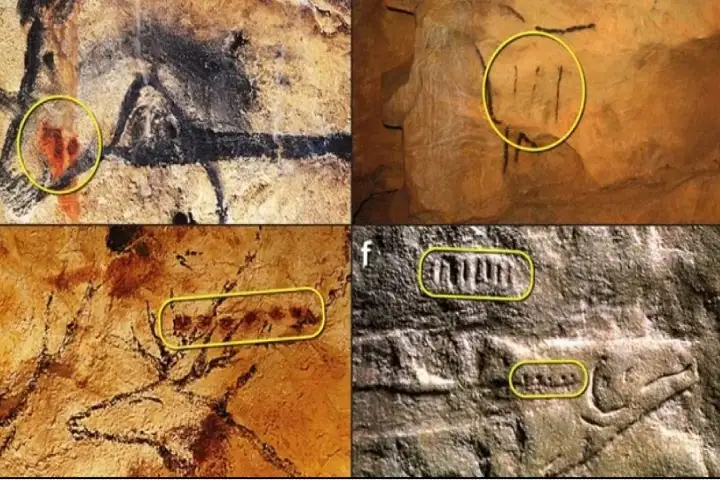

The cave drawings which are 20,000 years old were used by human beings as a calendar as well as recording important events (Pic. Courtesy Twitter/@action_brain)
It is not necessary that only a specialist or an expert can solve a mystery about the past. For example, a furniture conservator based in London has made a crucial find that helps historians understand the cave paintings done by Ice Age hunter-gatherers, as per a report in bbc.com.
Following his investigation and analysis of the markings on the 20,000-year-old drawings, Ben Bacon felt that they probably pointed to a lunar calendar. His conclusion helped a team of specialists to surmise that the early people in Europe were jotting down notes about the timing of the reproductive cycles of animals.
Bacon referred to working out what the hunter-gatherers were trying to say as “surreal”.
Caves across Europe have paintings depicting animals like cattle, reindeer and fish. Yet, what flummoxed the archaeologists was the dots and other markings in the paintings and this is what Bacon set out to explore and understand.
Going about in a methodical manner, he spent several hours on the Internet and poured over cave paintings in the British Library. He “amassed as much data as possible and began looking for repeating patterns”.
It was the ‘Y’ sign on some of the works that intrigued him and this he thought reflects or points at “giving birth”. The reason being it depicted one line growing out from another. As his study progressed he roped in senior academics and well-wishers who motivated him to keep going.
A team of experts who included two Durham University professors and one from University College London, United Kingdom joined him. Along with them Bacon worked out the birth cycles of present-day animals which were similar to the ones shown in the paintings. They concluded that the marks on the painting was a record, by lunar month, of the mating seasons of the animals.
Talking about the study, Prof Paul Pettitt, Durham University, said he was “glad he took it seriously” when Mr Bacon contacted him.
Pettitt went on to add: “The results show that Ice Age hunter-gatherers were the first to use a systemic calendar and marks to record information about major ecological events within that calendar. In turn, we’re able to show that these people, who left a legacy of spectacular art in the caves of Lascaux [in France] and Altamira [in Spain], also left a record of early timekeeping that would eventually become commonplace among our species.”
Details of the research done by the team have been published in the Cambridge Archaeological Journal.
External Affairs Minister S Jaishankar on Thursday met a delegation of special envoys from the…
Amnesty International has issued a report demanding the immediate and unconditional release of detained leaders…
India on Thursday dispatched a consignment of 300,000 doses of Measles and Rubella vaccines, along…
At least four people were killed and dozens injured in violent clashes between law enforcement…
An earthquake of magnitude 7.3 on the Richter Scale rattled Alaska in the early hours…
Amid rising global tensions and economic uncertainty, External Affairs Minister S Jaishankar on Wednesday raised…